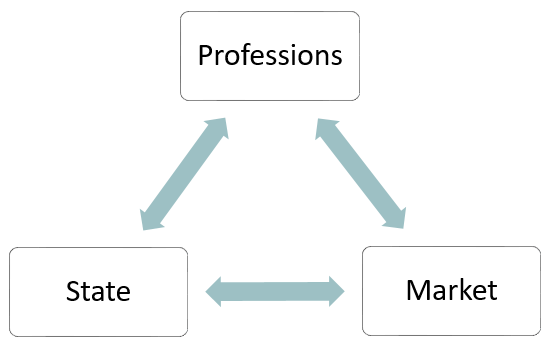Research Library
What is a Profession?
The word 'profession' means different things to different people. But at its core, it is an indicator of trust and expertise.
Overview
Professions are at once familiar – medicine, law, the priesthood, accounting, engineering, architecture and so on. They develop and provide specialised utilitarian knowledge to act as fiduciaries to clients and are the guardians of social institutions. The essence of profession is also partly elusive because professions are part of civil society and stand between the market and the state, and are in constant relations with both.

However, these functions and commitments produce many points of tension. Another reason why professions are elusive is because they are not static. Professions are part of society and are influenced by (and influence) the ideas, interests and circumstances around them.
Accordingly, the professions are introduced through an outline of the different ideas of profession and the changing interests and circumstances which have influenced professional work over the last century or so. The main issues and ideas covered are:
- The traditional model of professions and its leading features;
- The ‘Professional Project’ and a more critical approach;
- The Commercial-Managerial Model of Profession; and
- The promise of professions in the 21st century.
Throughout this article these ideas are covered against the background of significant change in the practical and economic circumstances of professional practice. These changes have transformed some professions, or parts of them, from the individual or small partnership setting of traditional professional practice with close allegiance to professional associations. Instead, large firms of mobile-employed professionals with national or global reach have developed. Instead of advising individuals, professionals working in these entities advise corporations and business, and some earn very high remuneration. The personal relationship with the client may become more distant through the use of IT and the digital delivery of professional advice. A leading challenge for professions in the 21st century is how individuals working in these large entities satisfy both local professional standards and the requirements and demands of the powerful clients they advise in cross-border settings.
